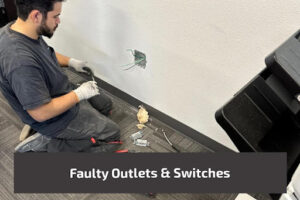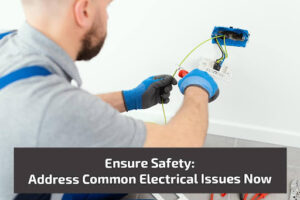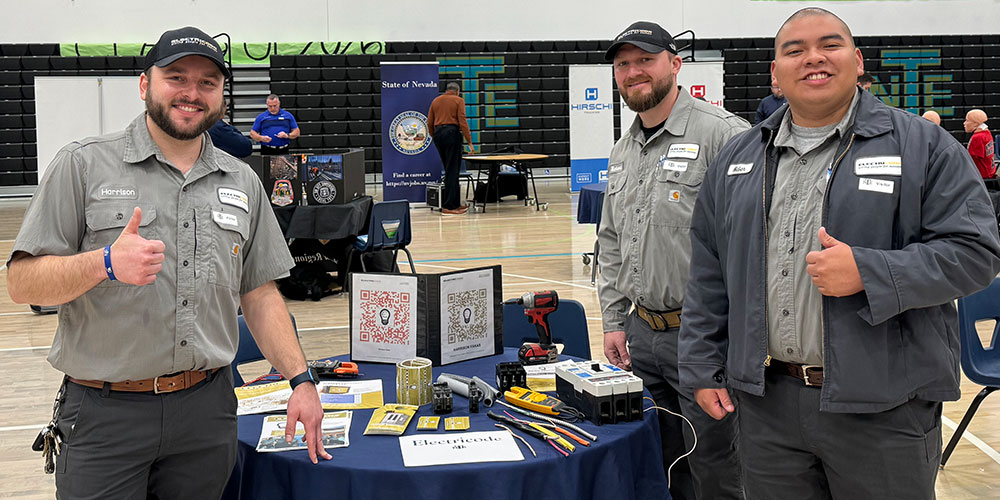
5 Common Issues with Home Electrical Systems
In the modern age, where our daily lives rely heavily on technology, the reliability and safety of our home electrical systems are paramount. Common electrical issues can disrupt daily routines and pose safety risks if addressed. Outdated wiring, overloaded circuits, and unexpected flickers or surges are among the prevalent problems many households face. To maintain a secure and smoothly functioning household, it’s essential to promptly identify and tackle these issues. Understanding the root causes of electrical problems is the first step toward ensuring a safe home environment.
Regular inspections by qualified commercial, residential, and industrial electricians can also help detect and resolve underlying electrical issues before they escalate, ensuring the safety and reliability of your home’s electrical infrastructure.
1. Outdated Wiring & Electrical Systems:

Outdated wiring, rewiring, and electrical systems pose significant hazards in homes, including increased risk of electrical fires, shocks, and inefficient energy usage. Signs that indicate the need for wiring upgrades include flickering lights, frequently tripping circuit breakers, discolored outlets or switches, and the presence of knob-and-tube wiring or aluminum wiring, which are outdated and potentially unsafe.
To address these risks, homeowners should schedule inspections by licensed electricians to assess the condition of their wiring. Electricians can identify outdated components, wiring deficiencies, and safety hazards and recommend upgrades to meet current electrical codes and standards.
Upgrading to modern wiring materials, such as copper or updated aluminum wiring, ensures safer electrical operation and reduces the risk of electrical hazards in the home. Regular inspections, repair, troubleshooting, installation services, and timely upgrades are essential for maintaining a safe and efficient electrical system.
2. Circuit Overload & Frequent Tripping Breakers:
Circuit overloads, which include electric panel features such as outdoor lighting and ceiling fans, occur when the electrical demand on a circuit exceeds its capacity, leading to frequent tripping of circuit breakers and potential electrical hazards.
To distribute electrical load effectively and prevent circuit overloads:
- Identify high-demand appliances and spread them across different circuits.
- Avoid using multiple high-wattage devices on the same circuit simultaneously.
- Consider redistributing appliances to balance the load across circuits.
Professional assessment for circuit breaker issues is crucial:
- Electricians can identify the root cause of frequent tripping, such as faulty breakers or overloaded circuits.
- They can recommend upgrading electrical inspections through circuit breakers to handle increased loads safely.
- Professional assessments ensure compliance with electrical codes and standards, minimizing risks of electrical fires and other hazards associated with circuit overloads.
3. Flickering or Dimming Lights
Flickering or dimming lights can be caused by various factors within the electrical system:
- Loose or faulty electrical connections
- Voltage fluctuations due to issues with the electrical grid
- Inadequate wiring or outdated fixtures
Distinguishing between connection issues and grid problems is essential:
- Check if the problem affects multiple fixtures or specific areas of the house.
- Contact your utility provider to rule out grid-related issues.
Simple fixes for flickering lights include tightening loose connections and replacing faulty bulbs. However, persistent or widespread issues may require professional intervention:
- Electricians can diagnose outdoor & indoor underlying electrical issues, such as faulty wiring or inadequate voltage supply.
- Calling an expert ensures safe and effective resolution of lighting problems, minimizing the risk of electrical hazards.
4. Faulty Outlets & Switches

When installing LED lights, non-functional outlets and switches pose significant safety risks in homes, including the potential for electrical shocks, fires, and damage to connected devices.
To test for and identify faulty outlets and switches:
- Use a voltage tester or plug-in device to check for power at outlets.
- Look for signs of physical damage, such as cracks, discoloration, or burn marks.
- Test switches by toggling them on and off to ensure proper functionality.
Safety measures for replacing or repairing these components:
- Turn off power at the circuit breaker before working on outlets or switches.
- Use insulated tools and wear protective gloves to avoid electrical shocks.
- Replace damaged outlets or switches with new, compatible components following manufacturer guidelines.
5. Surge Protection & Electrical Spikes
Surges and spikes refer to sudden increases in electrical voltage that can pose severe dangers to home electronics and appliances, potentially causing damage or premature failure.
Potential dangers of surges and spikes include:
- Risk of damage to sensitive electronic devices like computers, TVs, and kitchen appliances.
- Increased likelihood of electrical fires due to overloaded circuits.
Surge protectors play a critical role in mitigating these risks:
- Surge protectors divert excess voltage away from connected devices, shielding them from damage.
- Install surge protectors at critical locations, such as near electronic devices or the main electrical panel.
Strategies to protect home electronics from voltage spikes:
- Use high-quality surge protectors rated for the specific power requirements of devices.
- Unplug electronics during electrical storms or when not in use for extended periods.
- Consider whole-house surge protection installed at the main electrical panel for comprehensive protection against electrical spikes.
Ensure Safety: Address Common Electrical Issues Now
Addressing common electrical issues is essential for maintaining a safe and efficient home environment. By tackling issues such as outdated wiring, circuit overloads, faulty outlets, and surge protection, homeowners can minimize safety risks, prevent electrical hazards, and prolong the lifespan of their electrical systems and devices.
Regular inspections by qualified electricians and timely repairs or upgrades ensure electrical safety and efficiency. Prioritizing these measures enhances comfort and convenience and provides peace of mind, ensuring that the home’s electrical infrastructure is reliable and up to modern standards.
Contact us today to address your electrical issues and ensure your home’s safety and efficiency! Call (702) 996 5448 today to get professional electrical service in Las Vegas.








